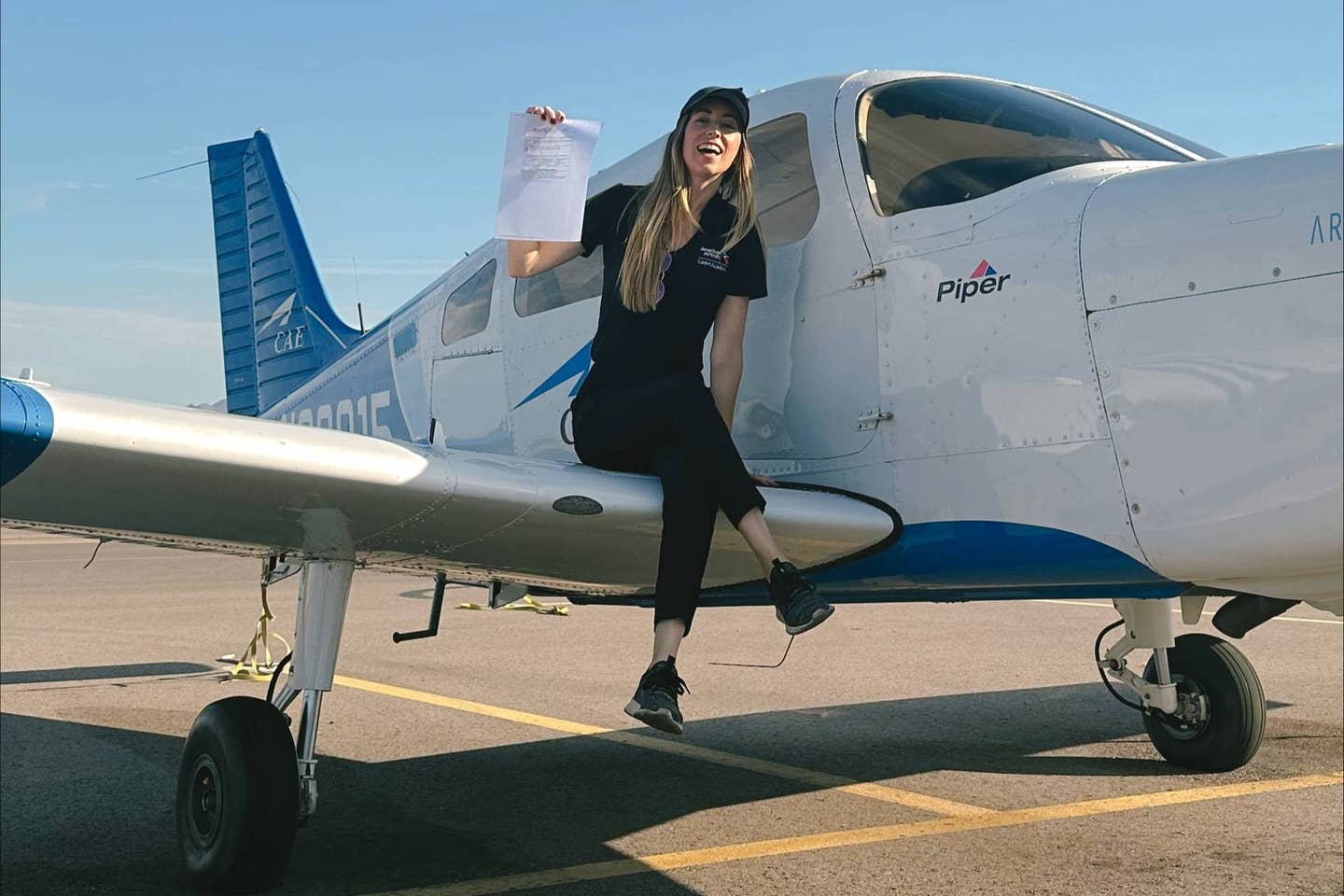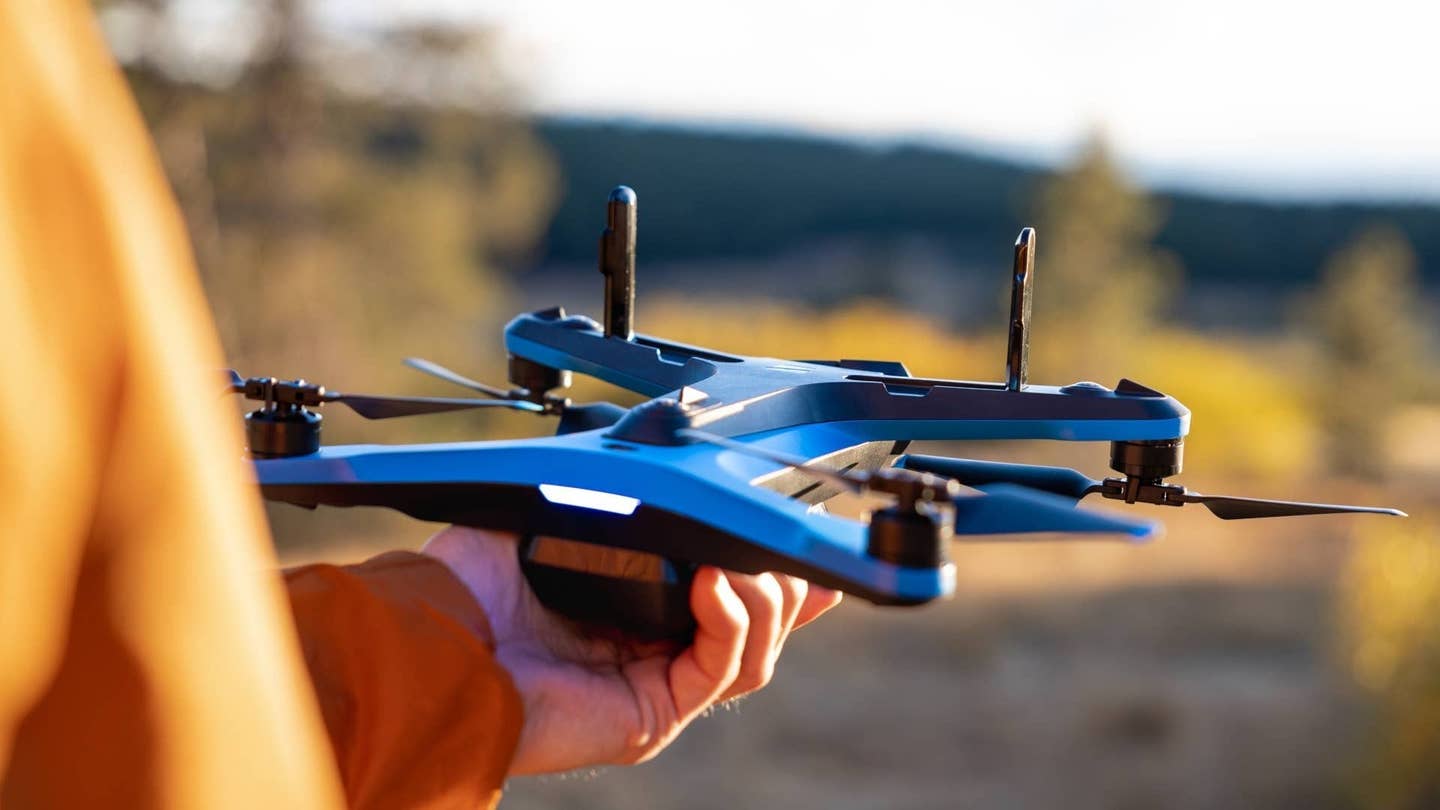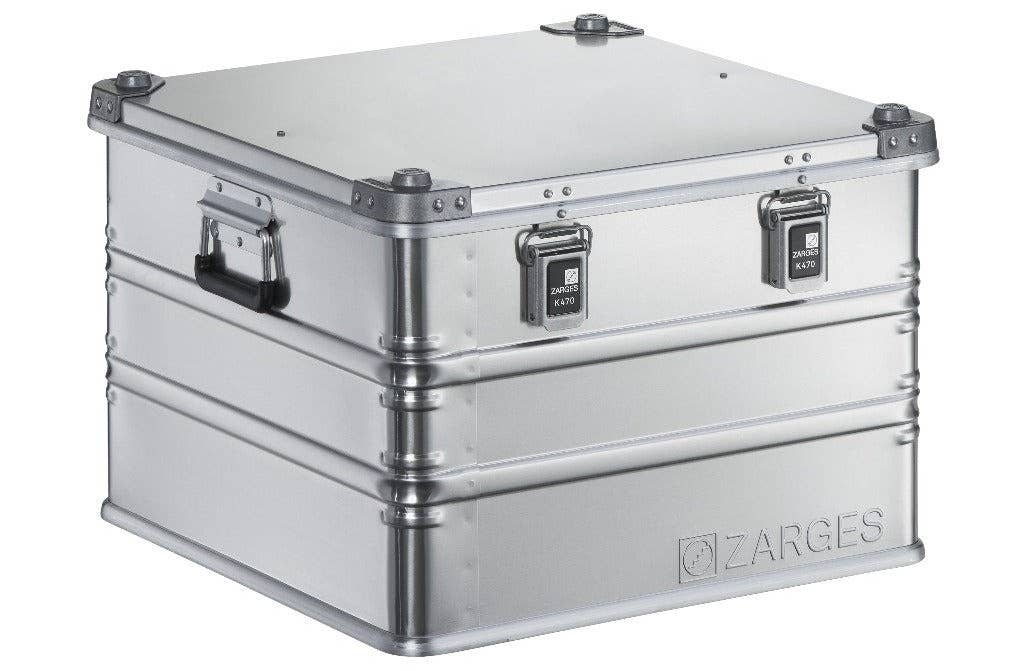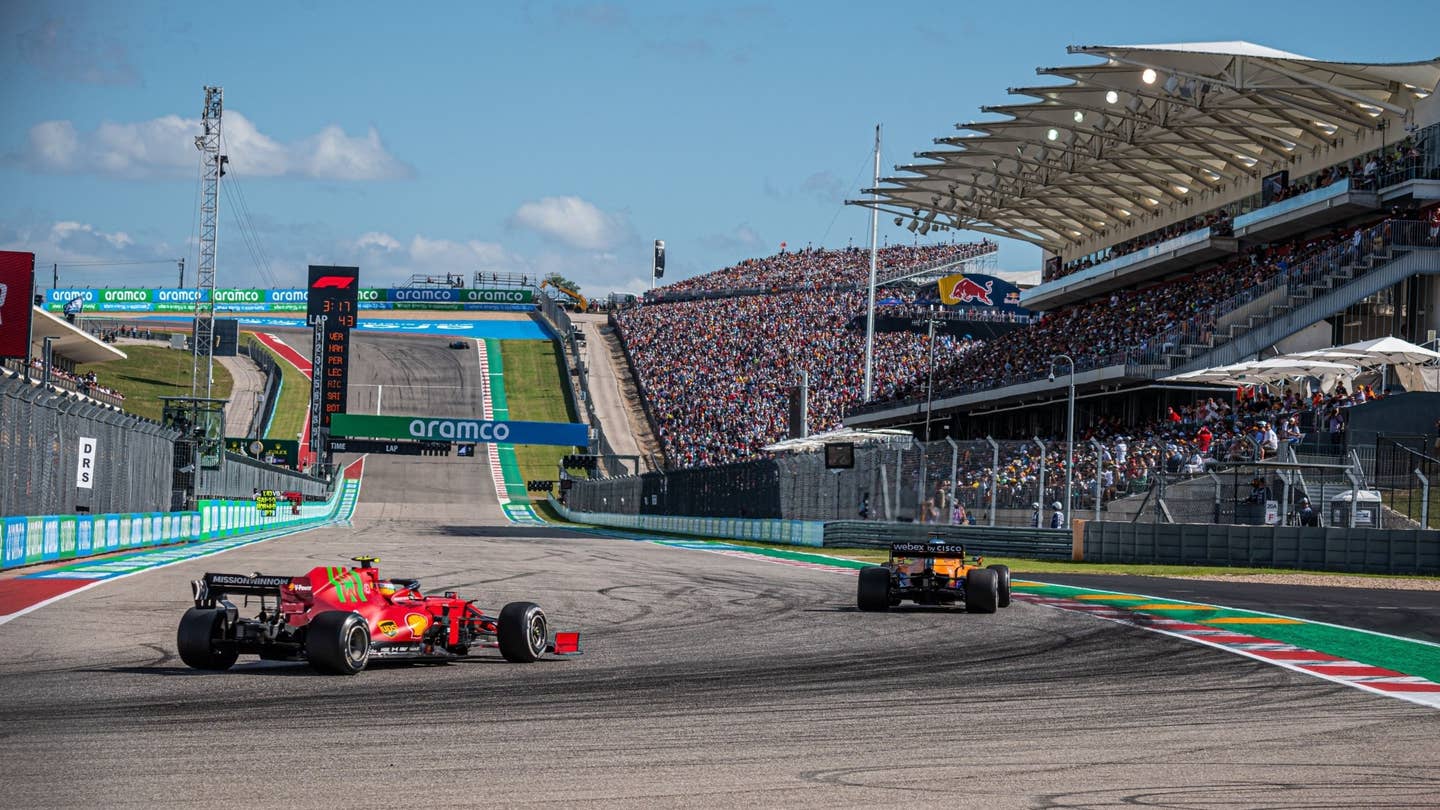
Short and soft field takeoffs demand thorough planning, precise technique, and consistent practice [Credit: Adobe Stock]
On July 3, 2021, at a small airstrip in Pottsboro, Texas, a pilot attempted a combined short and soft field takeoff in a Piper PA‑28‑151. The 2,375‑foot runway was rough, unimproved, and surrounded by trees.
The pilot and her passenger performed a routine preflight inspection and checked the weather. They believed their performance calculations were in order. Exact causes of their soon-to-be incident aren’t entirely clear, but it was evident that the pilot did not properly account for a takeoff from a short grass field.
Although the engine instruments showed normal readings and full power, the airplane did not accelerate as quickly as projected. By the time it lifted into ground effect, the pilot realized the aircraft would not outclimb the trees ahead. She aborted the takeoff but could not stop before reaching the end of the runway. Both pilots were unharmed, but the aircraft sustained significant wing damage on impact with small trees.
Performance margins can be razor thin on short and soft runways. Good preflight planning, clear knowledge of the aircraft’s performance, and swift, correct responses to changing conditions are essential in these scenarios.
Pre-Takeoff Preparations
Good planning begets confidence, helps pilots avoid common mistakes, and paves the way for some good fun. Above all else, planning is the first step in any safe flight. This includes consistently calculating weight and balance, accounting for expected weather conditions, and checking performance calculations against runway surface conditions and lengths.
Environmental factors, such as temperature and density altitude, can dramatically degrade climb performance. High temperature combined with higher field elevation effectively thins the air, reducing engine output and airfoil lift. What seems like a comfortable runway length at first glance may shrink considerably under these conditions. Wet or muddy surfaces, likewise, can also lead to slower acceleration and longer ground rolls.
Weight and balance calculations should be performed as always to ensure the aircraft is within limits. Issues that may be less noticeable under “normal” runway conditions can become exaggerated while conducting a performance takeoff, where optimal climb performance is often more of a necessity than a luxury.
Conduct a thorough preflight inspection and a proper run-up as you would before any takeoff to confirm that the engine is producing full power. While power loss on takeoff is never a good thing, short field conditions are the worst-case scenario.
Much of this preflight work is really no different than what you should do before any other flight, but to some extent, the stakes are higher. If it has been a while since you last flew, take advantage of online refresher courses or get an experienced instructor’s input to regain or sharpen your planning skills.
Technique for limited-runway-length departures
The first thing to note is that procedures for each type of performance takeoff can be found in your POH. While we offer some best practices, your aircraft’s POH is your bible, so reference it before taking off if you have any doubts about what to do.
That said, the principles behind each sort of takeoff are fairly simple. To start, short field takeoffs aim to accelerate in the smallest distance possible before establishing and maintaining a safe climb angle sufficient to clear any obstacles ahead.
Some, though not all, aircraft utilize a POH-specified flap setting. A common procedure is for the pilot to hold the brakes while advancing the throttle to (usually) full power. Once desired power is established, the pilot releases the brakes and begins the ground roll.
- READ MORE: Best Gear and Tools for a Rusty Pilot
Early recognition of any power deficiency at this stage is vital. If the engine is not developing the expected rpm or manifold pressure, an immediate abort can save your aircraft, or even your life.
Rotation often begins at a lower speed than in normal takeoffs, at which point the pilot will establish a VX (best angle) climb, particularly if there are obstacles ahead. If the departure path is obstacle free, a pilot can transition to VY (best rate of climb) sooner, allowing for better engine cooling and faster overall altitude gain. Once clear of obstacles, if the pilot has any flaps in, they will retract them in increments to avoid any abrupt loss of lift.
Technique for less stable or unpaved surfaces
Soft field conditions include grass, gravel, mud, sand, or any surface prone to increased rolling resistance or sinking. The primary objective when taking off in these sorts of conditions is to reduce the drag caused by landing gear contacting the soft surface.
Many aircraft guidelines for soft field procedures recommend holding the elevator fully aft to lighten the nosewheel while taxiing and slowly relieve this back pressure as airspeeds increase during the ground roll. This helps keep the aircraft “light” by taking advantage of its aerodynamics and, ideally, stay free of any surface rut, mud, or potholes that might hinder acceleration.
Apply power promptly but smoothly. In many training aircraft, flaps are partially deployed to increase initial lift, allowing it to separate from the ground sooner and avoid any further ground-resistance or potholes. Once airborne at a lower speed, it stays momentarily in ground effect. This step is delicate, as the pilot must not overpitch and risk a high drag condition or stall.
Once a safe airspeed is reached in ground effect, a gradual transition to a normal climb occurs. Pilots may target either VX or VY, depending on whether any obstacles lie ahead. Flaps are retracted progressively to avoid losing too much lift at once and, potentially, settling back on the ground at high speed.
Realistic practice with an instructor or experienced pilot on soft or unimproved fields is the best source of proficiency. Even so, it is best to come prepared with a good knowledge base, aided by quality online resources. These often provide opportunities to run through soft field exercises repeatedly in a more controlled environment before tackling actual unimproved strips.
Post-Takeoff Considerations
The moments immediately after liftoff often determine the outcome of short or soft field departures. Once the aircraft is climbing, careful attention to airspeed is necessary to maintain a proper airspeed, as well as to transition from VX to VY at an appropriate time. Pilots flying in high density altitude regions frequently need to keep an eye on engine temperatures, because low air density can cause higher engine temperatures when in a VX climb.
As already mentioned, pilots who had flaps in should remove them in increments to avoid an abrupt loss of lift. At the same time, pilots might need to begin leaning their mixture if the departure is at a high-density altitude airport. Again, follow POH recommendations for your specific plane.
Trim for appropriate climb speed to reduce workload while continually checking engine instruments for any early sign of overheating or abnormalities.
Above all, retain situational awareness. Especially in mountainous backwoods environments, understand the departure corridor and be ready to handle any unexpected emergencies. A good practice for operations from remote or unimproved fields is to conduct reconnaissance flights in the vicinity before attempting actual takeoffs or short/soft field landings. Doing this ahead of time helps ensure that no new obstacles or hazards have appeared since the last visit or otherwise went uncharted.
Common Mistakes and Pitfalls
While short and soft field takeoffs are relatively simple maneuvers, and can feel downright easy in controlled environments, they come with a plethora of risks and a potentially high workload in real-world scenarios.
A common error for new or rusty pilots is overrotating. Lifting the nose too aggressively can lead to excess drag, or even a stall. Neglecting to hold the recommended flap setting during initial climb, either retracting too soon or failing to retract once a safe altitude and speed have been reached, can also put rusty pilots into compromising situations.
Equally problematic is overloading the aircraft or miscalculating the density altitude or other performance data. Charts, performance data, and real-world references offer clarity on how temperature, weight, and altitude all interact to influence the distance required for takeoff.
Short and soft field takeoffs demand thorough planning, precise technique, and consistent practice. They open up a realm of possibilities for the adventurous pilot, from landing on remote grass strips to operating at smaller airports with limited runways. Failure to stay proficient with these skills, though, can be the cause of much anxiety at best, or actual accidents at worst. Regular proficiency flights, simulator sessions, and advanced training flights with an instructor go a long way towards keeping these maneuvers sharp.
Pilots also benefit from carrying the right gear to feel at ease while preparing for these maneuvers. Flight-specific mounts and kneeboards help enhance cockpit organization, while specialized pilot apparel can make field operations far more comfortable and remove sources of distraction in challenging environments. Adding a few well-chosen items to the cockpit or flight bag can streamline the predeparture workflow, leaving more mental bandwidth for the critical tasks of flying.
Mastering short and soft field takeoffs builds the kind of confidence that pays off in every flight environment. Whether flying out of a local airport with a modest strip or venturing to backcountry fields, understanding these performance maneuvers ensures safer and more efficient departures. When the unexpected arises, having well-honed takeoff skills—and the right mindset—can prevent mishaps and protect both airplanes and occupants.
FAQ
What is the difference between soft field and short field takeoff?
Soft field takeoff procedures minimize rolling resistance and prevent the airplane from becoming stuck on rough or moist terrain. Short field takeoff procedures concentrate on achieving liftoff and climbout in the smallest possible distance.
What is the purpose of the soft field takeoff?
A soft field takeoff is designed to reduce drag caused by the airplane’s wheels contacting a surface that can impede movement, such as grass or mud.
How to do a short field takeoff?
Power is applied smoothly or sometimes with brakes held to establish full engine performance before rolling. The pilot then rotates at a slightly lower speed than normal, but careful pitch control is vital to avoid stalling. After liftoff, climb is often initiated at VX (best angle) if obstacles must be cleared, followed by a transition to VY (best rate) once safe.
What flap setting for soft field takeoff?
Flap settings vary based on the aircraft’s specific Pilot’s Operating Handbook (POH). Many training aircraft recommend a partial flap configuration (for example, 10 degrees) to generate extra lift on a soft field.

Sign-up for newsletters & special offers!
Get the latest FLYING stories & special offers delivered directly to your inbox






